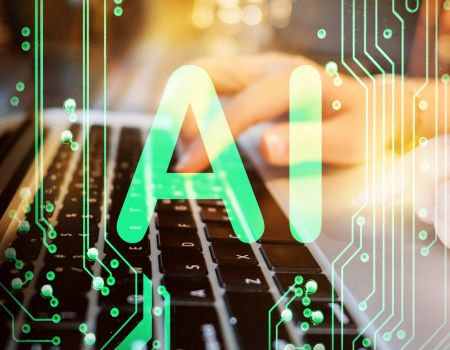Artificial Intelligence (AI) is invading our lives, businesses, government, and personal space. It is no longer an emerging technology, it’s the fastest-moving transformation engine our society has ever seen. The technology is moving at a pace that defies prediction. It’s not just rewriting rules for business and government, it is creating new rules.
Elected leaders at all levels of government are grappling with how best to establish clear guidelines, limitations and transparency related to the use of AI. While some federal agencies have implemented AI-specific policies, efforts to create standardized, government-wide guidelines are still underway.
At the state level, nearly every legislature has introduced AI-related bills, and many have already enacted laws to govern the use and disclosure of AI capabilities. Texas and California both require public disclosure if an agency uses generative AI to communicate with the public. Utah has similar AI disclosure regulations, focused on consumer protection related to generative AI. Montana restricts AI surveillance and profiling, and mandates human oversight for all high-impact decisions. Across the nation, AI commissions, working groups and advisory councils are being created to guide public entities in the responsible development and use of artificial intelligence. Meanwhile, many governmental entities are already using AI extensively. The following examples of upcoming opportunities are indicative of the many ways AI is changing the status quo.
The National Institutes of Health is planning a $50 million initiative to develop advanced artificial intelligence (AI) technologies that will analyze large-scale biomedical datasets. The project will accelerate medical research by creating AI platforms that can process and interpret diverse types of data, including genome mapping, medical imaging, clinical trial records, and electronic health records.
Central to the project is the integration of machine learning techniques, such as deep learning, computer vision, and natural language processing, to identify patterns, predict outcomes, and generate diagnostic or therapeutic insights. One key objective is to automate the analysis of complex datasets in ways that are not only accurate, but also explainable and clinically meaningful.
The AI tools developed through this effort will be designed to detect early signs of disease, uncover new biomarkers, and support personalized treatment strategies. In addition, the technologies must comply with rigorous standards for data privacy and security. The project will also prioritize tools that support existing research and clinical systems, enabling seamless integration into current biomedical workflows. A formal solicitation is planned for early 2026.
The State of Texas is moving forward with plans to establish the Texas Cyber Command Center, a statewide hub designed to strengthen cyber defenses for state and local governments. The facility will be located at the University of Texas at San Antonio (UTSA), leveraging the city’s proximity to key military bases and its strong cybersecurity and STEM research programs.
The law establishing the command center will take effect on September 1, 2025, and that will launch the next phase of development, beginning with design. The development process will include building secure infrastructure, recruiting cybersecurity professionals, and launching research and training initiatives to enhance the state’s cyber readiness. Among its key components will be:
· A Cyber Threat Intelligence Center that will help train state and local government officials to identify and defend against digital threats.
· A Digital Forensics Lab and Incident Response Unit which will support real-time threat detection, response coordination, and forensic analysis for statewide cyber incidents.
The State of Texas has allocated $135 million toward the project, and UTSA is contributing an additional $60.4 million to cover facility-related costs. Although the exact location is yet to be determined, construction of the project is expected to begin in 2026, with an anticipated completion date by January 2027.
San Jose, California is launching an ambitious initiative to modernize its sewer infrastructure using AI. The project will deploy an AI-powered video analysis system that inspects municipal sewer lines and identifies defects, obstructions, and areas in need of critical repair. Rather than relying solely on a manual review of inspection footage, the new system will analyze video data captured from inside sewer pipes to detect issues quickly and accurately. While installation of the AI components in the field is required, the primary focus of the project will be to develop a robust software system to analyze and code video footage from the pipes.
With this new system, the city can execute construction projects on the aging sewage system with a quicker response time. The AI tool will be integrated into San Jose’s existing asset management system, allowing an expedited planning process. It will also be connected to historical city data which will enhance the accuracy and efficiency of video analysis. Design plans and construction dates have yet to be determined. The estimated cost of the project is $20 million.
The Minnesota State government is launching a comprehensive upgrade to its network and cybersecurity infrastructure to respond to growing threats and protect critical data across the state. The $38 million modernization initiative focuses on four critical components: zero-trust architecture deployment, enhanced logging, endpoint protection, and staff training.
First, zero-trust architecture strengthens security by requiring constant verification of users and devices before granting access to systems. Second, enhanced logging will improve the state’s ability to detect and respond to cyber incidents through centralized monitoring and real-time threat alerts. Third, advanced endpoint protection safeguards employees on devices, where many attacks begin, by detecting and blocking viruses, malware, and other threats. Finally, expanded staff training will equip employees with the knowledge to recognize and avoid cyber risks, strengthening the human side of cybersecurity. The project is currently in the early stages of planning. A procurement and deployment timeline has not yet been announced, but state officials plan to have the implementation completed in 2027.
There’s no time to waste. Contracting firms are rapidly integrating AI into their service offerings, government leaders are racing to implement AI-driven solutions due to their proven impact, and professionals across sectors are eager to upskill—knowing their careers depend on it. The bottom line is clear: we all must deepen our understanding of this transformative technology. AI is poised to reshape how we live, work, make decisions, and achieve success—and the time to start learning is now.







